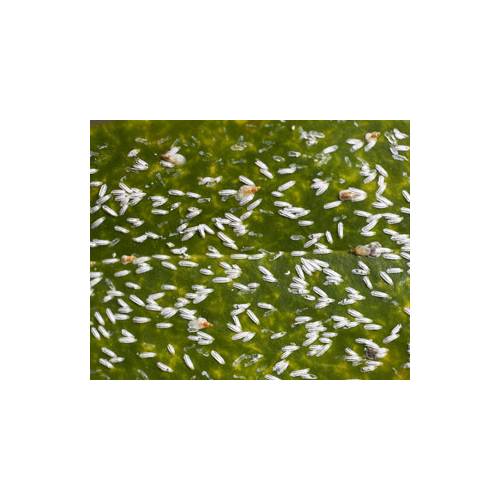
Parasites and insects
Hard-shelled scale insects
- Details
-
They may be discreet in their presence but the harm they do is certainly not. They are biting insects that are well hidden and well protected, they are particularly problematic indoors or under cover and when the weather is mild. As they increase in numbers these hard-shelled scale insects, weaken a plant and can spread other diseases.
The symptoms
At the beginning, the hard-shelled scale insects are often mistaken for little spots along the stems and on the leaves. Then their numbers increase and the scaled insects looking like clear scabs (most often yellow or white) appear on the leaves and along the veins of the plant. The leaves become sticky whilst the plant starts to loose vigour. Badly affected plants turn yellowish and can contract sooty mould.
Lifecycle
The arrival of a single individual is enough to cause an infestation; these hard-shelled scale insects can reproduce without the need for fertilisation. Actually, there are no male hard-shelled scale insects, just females who live quite happily without the gentlemen!
How to fight them
It is crucial to observe your plants closely to spot the first individuals. If there are, only a few of the hard-shelled scale insects you can squash them with your thumb. You can also remove them using a cotton bud soaked in alcohol. If it is a large infestation, you will need to use a treatment to have any real effect. You must use an oily emulsion (an anti-scale product) that you spray on the foliage. Attention: certain plants cannot tolerate this treatment, like those with a waxy covering such as echeverias and ferns.
How to avoid them
The confinement of plants encourages this parasite, for example plants that are kept indoors all year and not even taken outside in the summer. Think about airing your potted plants in the summer months. Also carefully inspect any plants that you bring into the house (especially cuttings that you are given) because it is often by this means that the pest enters your home!
Good to know
Citrus fruits are particularly susceptible to this pest, as are indoor palms. Outside it is the Japanese euonymus that often has the problem. The susceptibility is increased by a lack of water and often found on plants that are under watered. You must keep in mind that these scale insects proliferate on weakened plants! - Photos (1)

